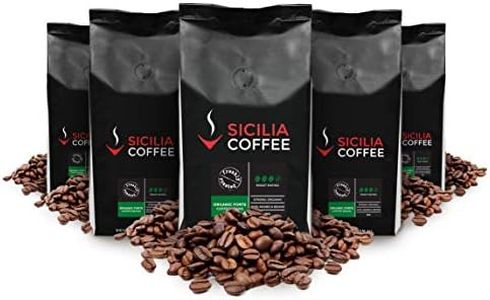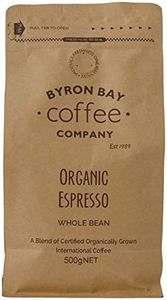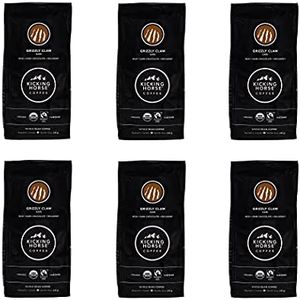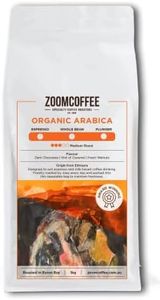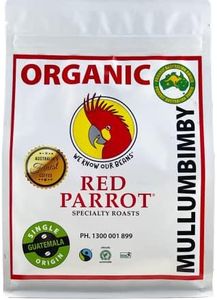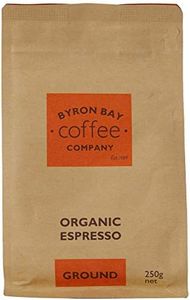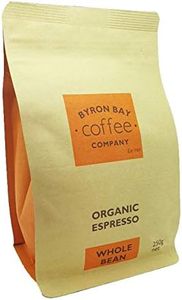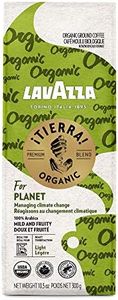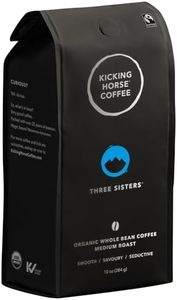We Use CookiesWe use cookies to enhance the security, performance,
functionality and for analytical and promotional activities. By continuing to browse this site you
are agreeing to our privacy policy
10 Best Organic Coffees
From leading brands and best sellers available on the web.Buying Guide for the Best Organic Coffees
Choosing the right organic coffee can be a delightful journey if you pay attention to your own taste preferences and brewing habits. Organic coffee refers to coffee that is grown without synthetic pesticides or fertilizers, and it must meet strict standards to earn its organic label. To find the best fit for yourself, consider where and how you like to drink your coffee, what flavors you enjoy, and which brewing method you prefer. Understanding the key aspects of coffee will help you make an informed decision that makes your morning cup just perfect for you.Coffee OriginCoffee origin simply means where the coffee beans are grown. This is important because the environment, climate, and soil in a specific region give coffee its unique flavors, which is known as 'terroir.' African coffees might be fruity and floral, Latin American coffees can be bright and crisp, while Asian coffees are often earthy and full-bodied. If you like a particular flavor profile, explore coffees from those specific regions. Trying single-origin versus blends can also help you discover what suits your taste buds best.
Roast LevelRoast level refers to how long and how intensely the coffee beans are roasted. This impacts the taste, acidity, and body of the final cup. Light roasts tend to preserve the unique flavors of the coffee's origin with more acidity and a lighter body. Medium roasts are balanced, with a mix of aroma, acidity, and body, while dark roasts are bold, bitter, and have a heavier feel, often overshadowing nuanced flavors. If you like mild, complex flavors, start with a light or medium roast. If you want your coffee strong and rich, dark roast is your friend.
Bean Type (Arabica vs. Robusta)The two most common types of coffee beans are Arabica and Robusta. Arabica beans are known for their smooth, nuanced flavors and lower caffeine content, making them a popular choice for those who enjoy a more refined cup. Robusta beans have a stronger, more bitter flavor with higher caffeine, and produce a thicker crema, so they're often found in espresso blends. If you prefer a gentle, aromatic cup, lean towards Arabica. For a punchy cup or if you add milk and sugar, Robusta or blends could be right for you.
Grind SizeGrind size means how fine or coarse the coffee beans are ground. This matters because different brewing methods work best with specific grind sizes. For example, a coarse grind is best for French press, medium for drip machines or pour-over, and fine for espresso makers. If you brew your coffee in one specific way, choose the grind that matches your equipment. If you have a grinder at home, buying whole beans gives you flexibility and freshness.
CertificationsOrganic certifications tell you whether the coffee actually meets organic standards. Look for labels such as USDA Organic or equivalent regional certifications. This is important if avoiding chemicals and supporting environmentally friendly farming practices matter to you. If your main goal is to ensure chemical-free coffee, always check that the certification is present on the package.
Flavor NotesFlavor notes are descriptive terms that tell you what sort of flavors you might taste, like chocolate, berry, nutty, or spicy. This matters for your enjoyment, because coffee can taste very different depending on these notes. If you prefer sweet and mild, look for chocolatey or nutty descriptions. If you enjoy something a bit brighter or more adventurous, fruity or floral might be more appealing. Sampling a few types initially can help you discover your favorites.
